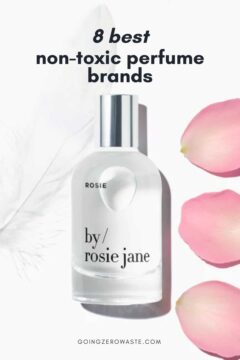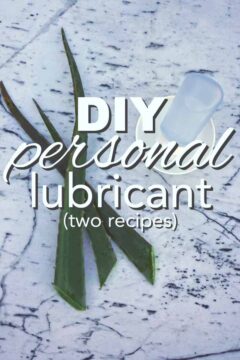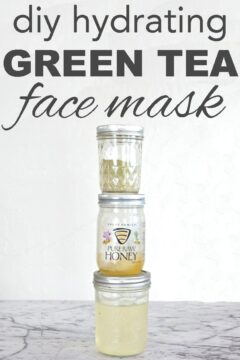Last Updated on February 29, 2024
According to EWG, “fragrance” or “parfum” on a product label represents an undisclosed mixture of various scent chemicals and ingredients used as fragrance dispersants such as diethyl phthalate.
EWG further acknowledges fragrance mixes have been associated with allergies, dermatitis, respiratory distress and potential effects on the reproductive system. They give “fragrance” a score of 8, 1 being the best and 10 being the worst for human (and environmental) health.
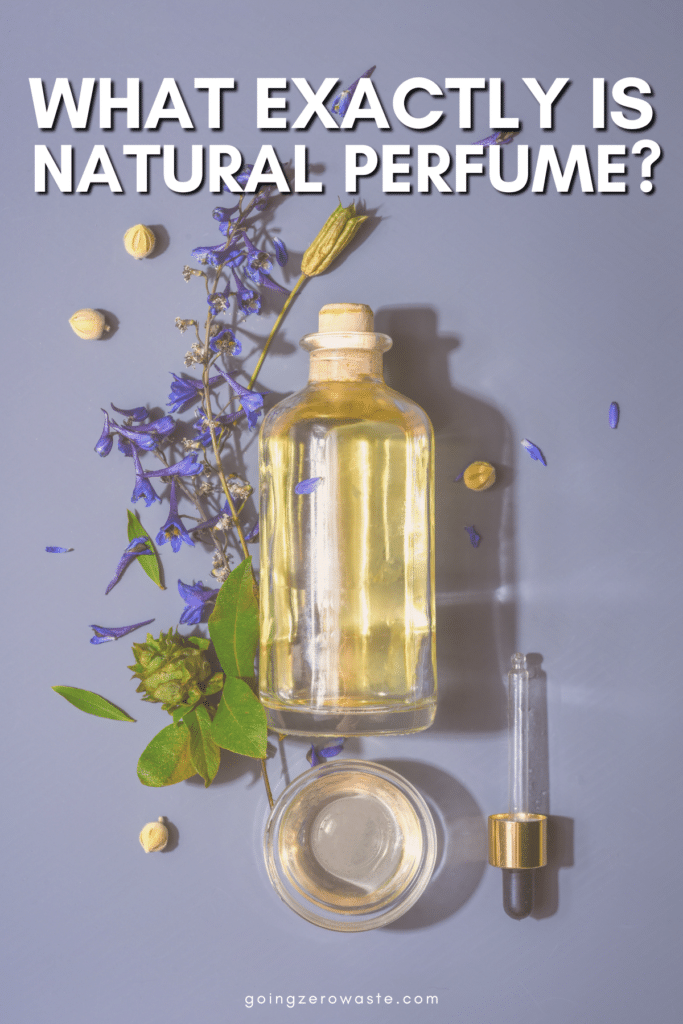
I personally try to avoid items that heavily rely on fragrance. They give me really intense headaches.
This includes items like air fresheners, fabric softeners, scent boosters, and perfume. Many of these products contribute to indoor air pollution, which is typically 5x more polluted than outdoor levels, according to the EPA, which can negatively impact our health.
In fact, half of the volatile organic compounds (VOCs), the building blocks of smog, studied from roadside air in Los Angeles came from household products! The other half came from vehicles.
I try to improve the air quality of my home by making my own DIY Febreze, making a simmer pot, or simply opening a window. I also avoid using conventional perfumes, as these trigger my headaches.
When it comes to perfume, I like to support sustainable perfume brands, or make my own DIY natural perfume. Here’s everything you need to know regarding natural perfume, and how I make my own.
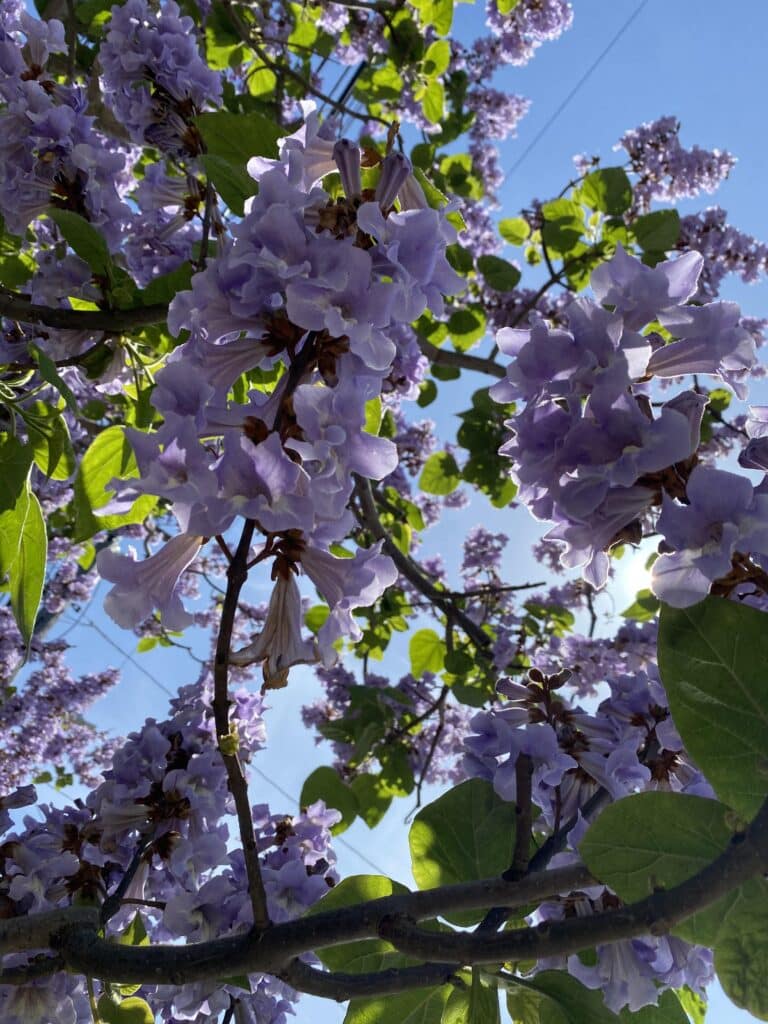
Table of Contents
what is a natural perfume?
A natural perfume is a fragrance derived from natural aromatics that are extracted from nature, such as trees, flowers and plants. Natural perfumes contain little to no synthetic ingredients.
A natural perfume will often contain essential oils and carrier oil. The essential oils’ fragrance characteristics are classified as notes. There are top notes, middle notes, and base notes.
Here’s a bit about each fragrance note:
- Top notes are light, fresh and fast acting. It’s usually the first scent you smell in a blend. They tend to evaporate quickly. Examples include grapefruit, orange, peppermint and lemongrass.
- Middle notes help balance the blend. You probably won’t smell them right away, but the soft scent may become apparent after a minute or two. Examples include rose, lavender and cinnamon bark.
- Base notes are strong and heavy, which ground the blend in their long-lasting scent. Examples include sandalwood, frankincense, cedarwood and patchouli.
Synthetic fragrances can replicate the scent of natural fragrances but are developed in laboratories.
Synthetic fragrances can have adverse health effects, as many are derived from petroleum by-products. Chemicals found in fragrances include phthalates, which are endocrine disruptors, and carcinogens benzophenone and styrene. In addition, some children and adults have allergic reactions to fragrance chemicals.
sustainable sourcing of natural fragrances
One benefit of synthetic fragrance over natural is that they do not require the harvesting of scents from trees or plants. Therefore, there’s no risk of overharvesting or damaging an ecosystem.
Frankincense collection can damage trees and threaten the livelihoods of villages who depend on them. High demand means that many trees are being over-exploited, and populations are at risk of dying out.
However, this is why it’s equally important we know where the ingredients in our perfume come from, and how it is sourced.
The most sustainable thing you can do is use the essential oils you already own to make your own DIY perfume (more on how to do this later).
If you’d like to make your own natural perfume and need to buy new essential oils, I recommend looking into brands that use organic ingredients and sustainable harvesting methods.
Not every essential oil brand is created equal, so choose brands that are harvesting their plants ethically like doTerra, Jade Bloom, Mountain Rose Herbs, and Plant Therapy.
It is also worth noting that even natural fragrances can have adverse health effects and trigger allergic reactions. So be mindful of this as you experiment with natural perfumes too.
is there an organic perfume?
Yes there are organic perfumes for sale on the market. If you’re looking for pre-made perfumes that contain natural, clean ingredients, here are the best non-toxic perfume brands.
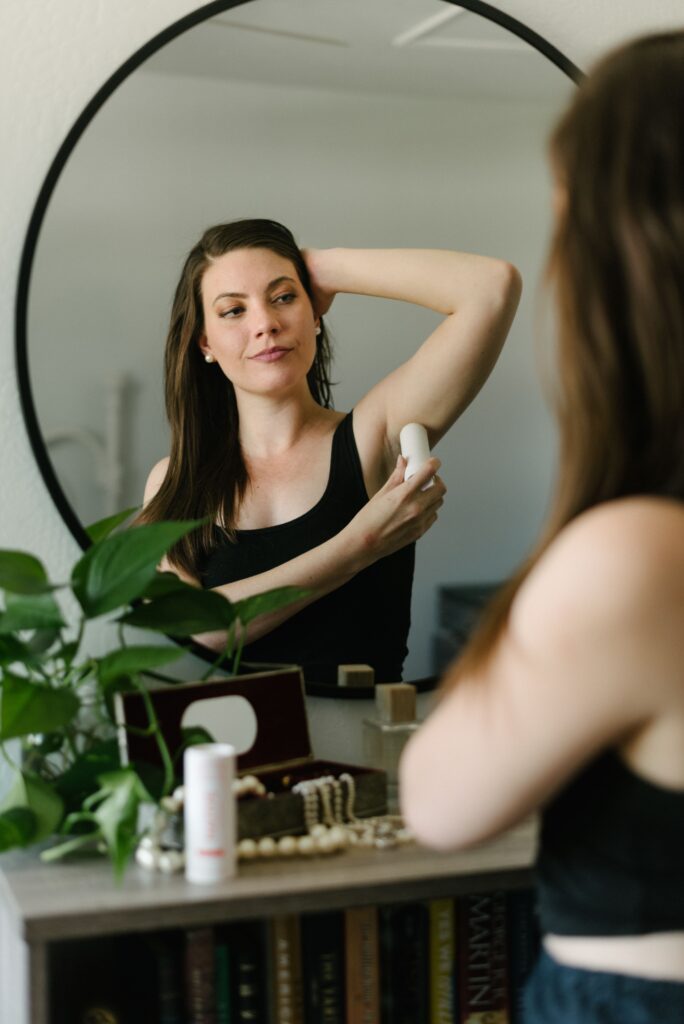
how can I smell good naturally without perfume?
You can smell good naturally without perfume in many ways. Here are a few simple ways to smell good naturally without perfume:
- Spritz yourself and your clothes with some rose water
- Apply natural deodorant daily
- Add a lavender bud or rose petal sachet to your clothing drawer
- Shower right after a workout and on a frequent basis using scented bar soap, like the ones from Lush
- Use one of these organic shampoos to clean your hair and make it smell great
- Keep up with dental hygiene: Brush your teeth twice a day, floss, and go to dental checkups every 6 months
- Eat more plant based: According to a study, eating a nonmeat diet was found to improve odor and vegetarian participants were judged as significantly more pleasant odor-wise
what can I use as a natural perfume?
There are many natural perfume options you can DIY yourself. Many times, herbs and spices can be used to make natural perfume, as well as essential oils.
I personally prefer to make an infusion using rose petals, lavender petals, and chamomile flowers bought in bulk from my local tea shop. You can infuse other types of herbs to get a different scent.
The other recipes below are natural perfume using essential oil blends. Before I go into the recipes, I’d like to share with you a few examples of essential oil blends and carrier oils, as they will be mentioned in the following recipes.
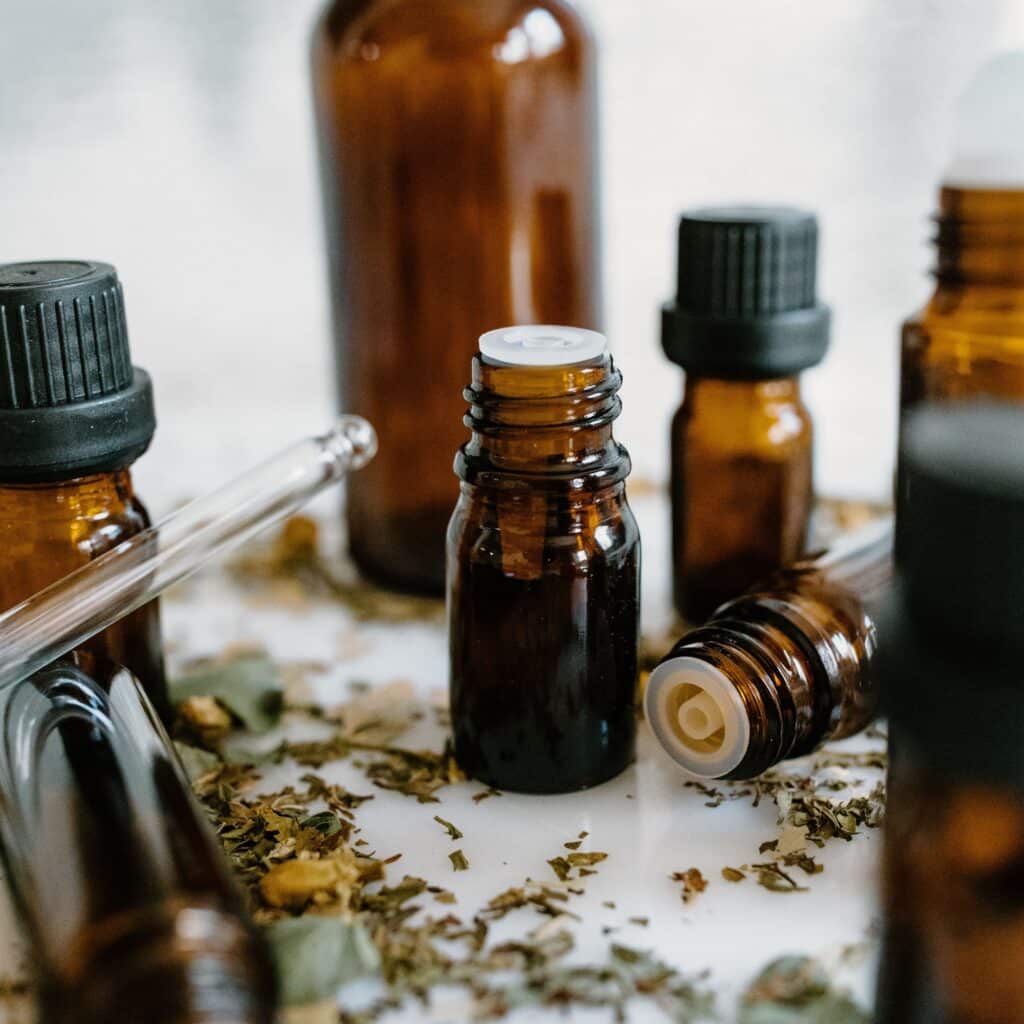
essential oil blends
These are some examples of essential oil combinations that work well together. Use it as inspiration, but feel free to play around and make up your own scents as well.
You can also play around with the number of drops you give each essential oil, but I recommend sticking to 10 drops max overall if you’re putting your DIY perfume in a 10ml glass bottle.
springtime blend
- Top note: 3 drops of tangerine essential oil
- Middle note: 5 drops of lemongrass essential oil
- Base note: 2 drops of peppermint essential oil
mysterious and sultry blend
- Top note: 3 drops of bergamot essential oil
- Middle note: 5 drops of jasmine essential oil
- Base note: 2 drops of vanilla essential oil
dreamy and romantic blend
- Top note: 3 drops of rose essential oil
- Middle note: 5 drops of ylang-ylang essential oil
- Base note: 2 drops of patchouli essential oil
earthy blend
- Top note: 3 drops of citrus (lime, lemon or sweet orange) essential oil
- Middle note: 5 drops pine, cinnamon, or nutmeg essential oil
- Base note: 2 drops of sandalwood or cedarwood essential oil
carrier oils
Carrier oils are oils used to suspend and deliver essential oils. They’re the base you add essential oils to so they are diluted before you apply them to your skin, which can prevent irritation. Ideally, you want your carrier oil to be thin and without a strong fragrance, so the essential oils can be the star.
Examples of carrier oils include:
- Fractionated coconut oil
- Sweet almond oil
- Grapeseed oil
- Jojoba oil
- Saffron oil
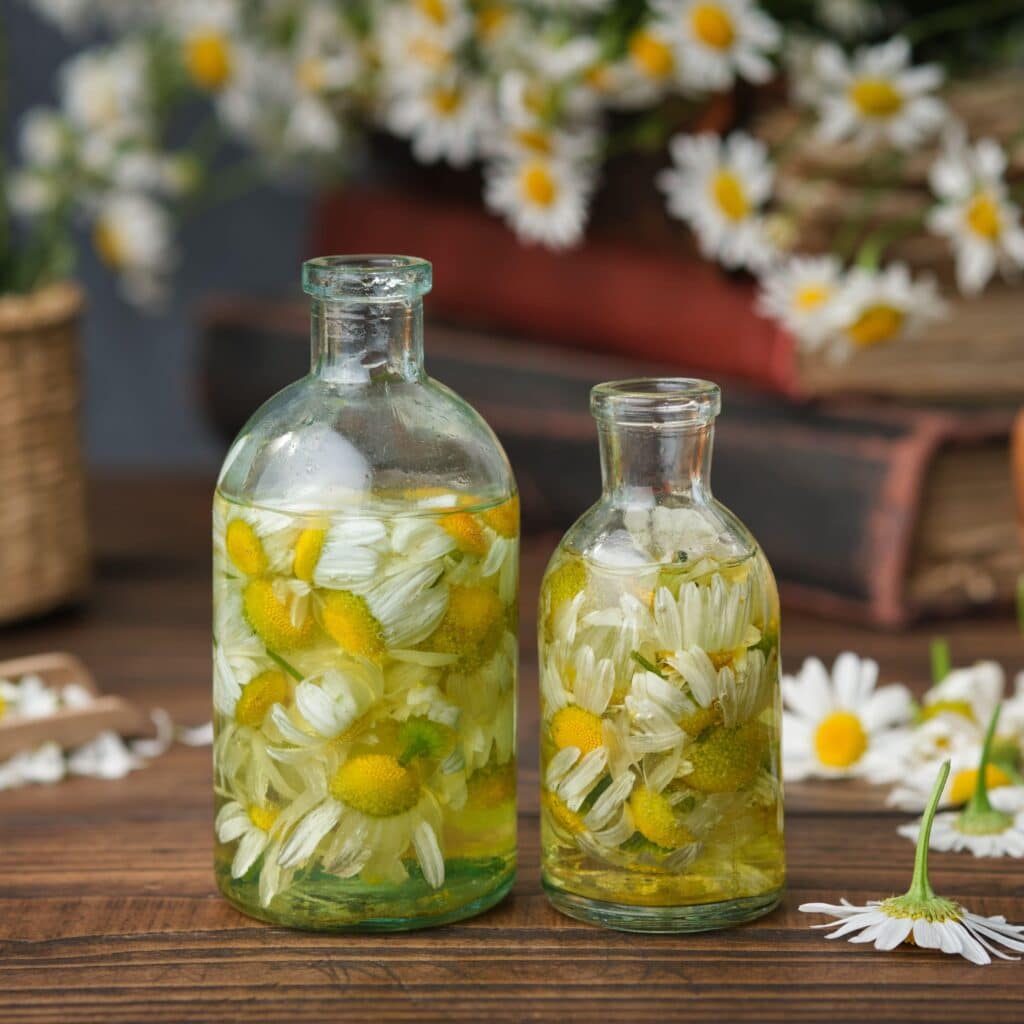
1. floral infused oil perfume
This DIY natural perfume recipe is from my book, 101 Ways to Go Zero Waste. Be sure to check it out for more recipes like this.
For this recipe, you’ll need a small 8-ounce swing-top jar to store the mixture in while it’s being prepared, and a little roll-on bottle to strain it into once it’s ready.
Ingredients:
- 1/4 cup dried rose petals
- 1/4 cup lavender petals
- 1/4 cup dried chamomile flowers
- 1 cup safflower oil
- 2 tablespoons vitamin E oil
Instructions:
- Add the dried flowers to an 8-ounce swing-top jar. Pour the safflower oil over the flowers and close the jar. Place the jar on the windowsill and shake once a day for 2 to 3 weeks. The oil will be infused with a beautiful floral scent.
- Strain the flowers out and pour the scented oil into a roll-on bottle.
- Apply the scented oil to your hot spots like wrists, behind the elbows, behind the knees, behind your ears, and where the collarbone meets in the middle.
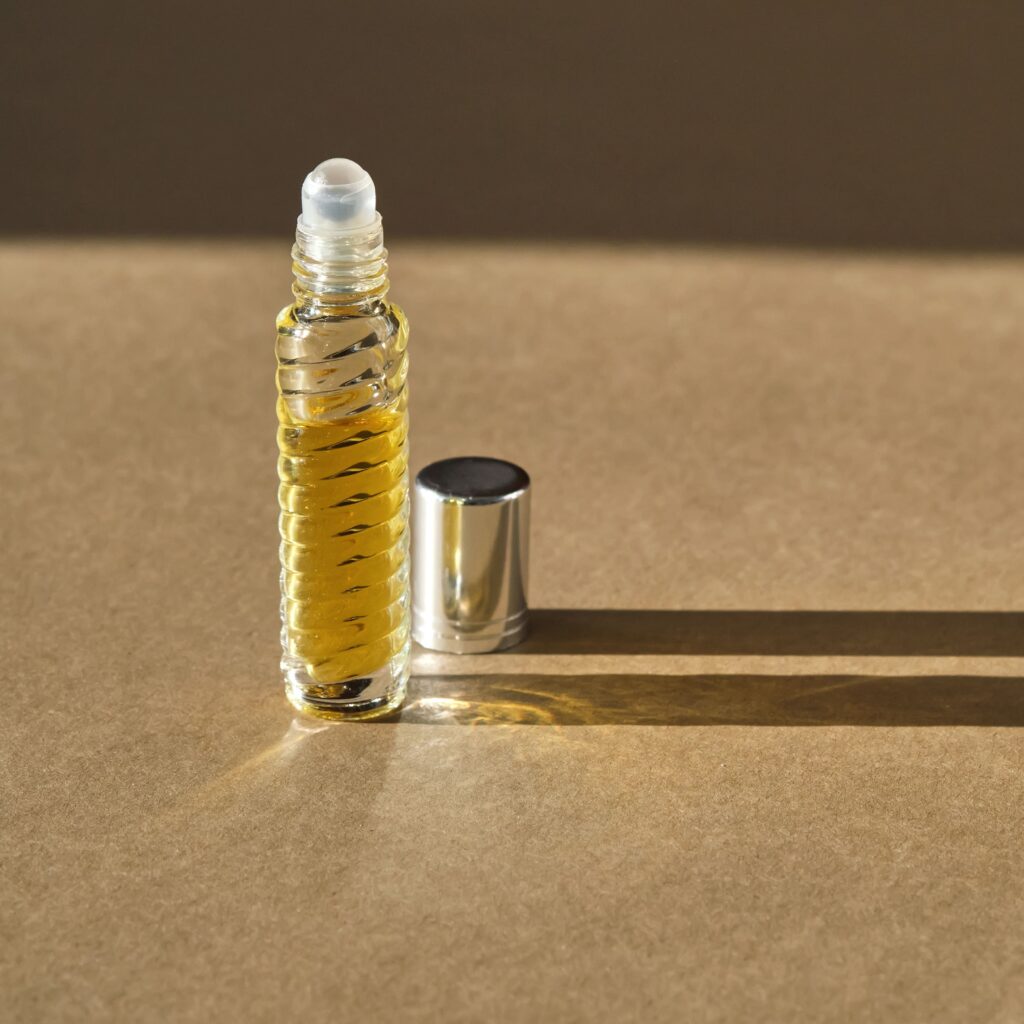
2. essential oil roll-on perfume
This perfume is perfect for those who prefer applying perfume directly onto their skin. It’s subtle, but wonderful for applying on dates or around friends. They’ll get a nice whiff when you give them a hug! Apply to your hot spots (behind the ears, wrists, etc.) for the best results.
Ingredients:
- 10 drops of essential oil blend of your choice
- 9 ml carrier oil of your choice to top off a 10 ml roll-on bottle
- Fresh and/or dried herbs and flowers (optional)
Instructions:
- Fill your perfume bottle with a carrier oil. If you don’t want your perfume bottle to have any color, choose fractionated coconut oil. The other oils will be in various shades of amber and green.
- Add the 10 drops of your chosen essential oil blend to your 10ml bottle.
- Add in your combination of fresh and dried flowers, leaves, or petals to decorate the bottle. This can be rose petals, lavender petals, calendula petals, etc.
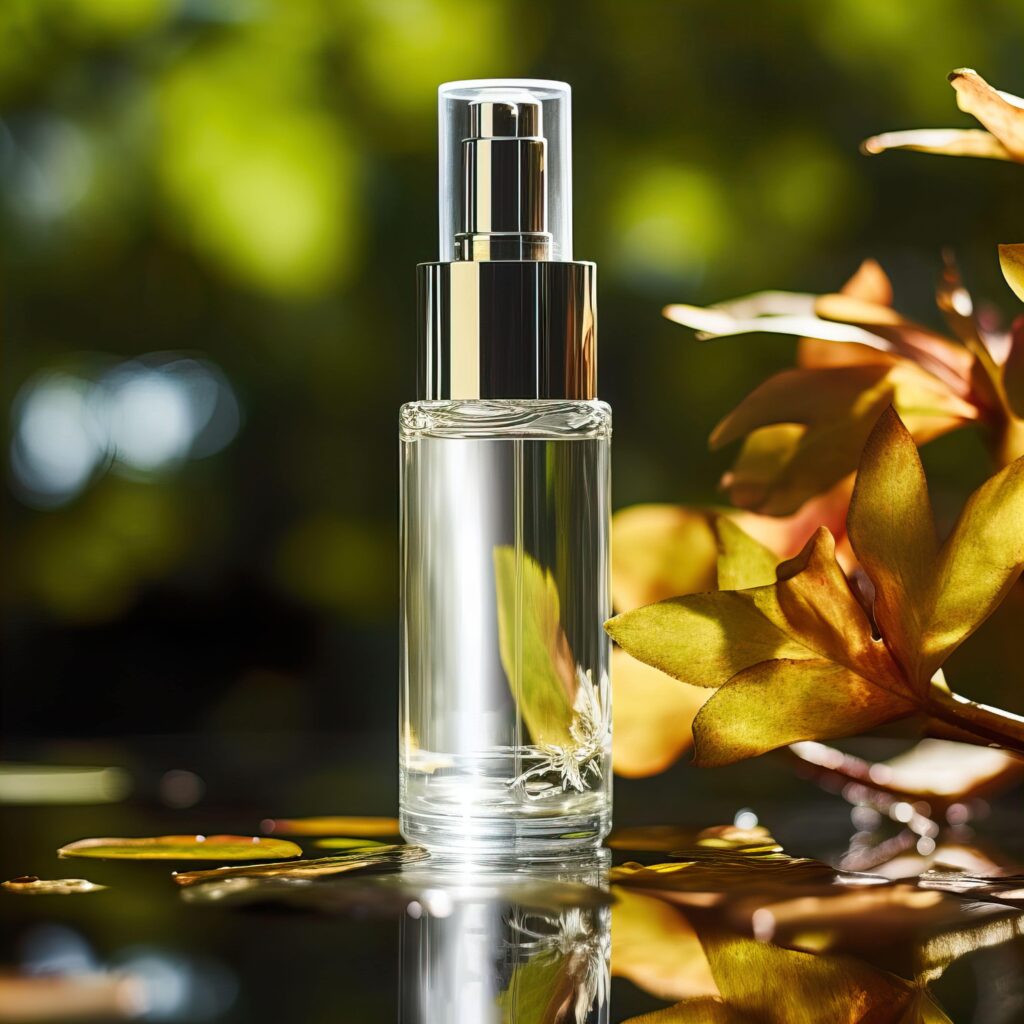
3. essential oil perfume spray
Ideal for those who prefer to spray on their perfume. Or, for those who like to spray their clothes to infuse them with a nice scent! Just a few spritz and you’ll be ready to walk out the door.
ingredients:
- ½ tsp of jojoba oil
- 10 drops of essential oil blend of your choice
- vodka or witch hazel to top off a 10 ml spray bottle
instructions:
- Using a small funnel, combine the jojoba oil and essential oils in the spray bottle. Replace the lid and shake well.
- Fill the bottle the rest of the way with witch hazel. Replace the lid and shake it up well to combine.
Would you try any of these DIY natural perfume recipes? Let me know in the comments!


